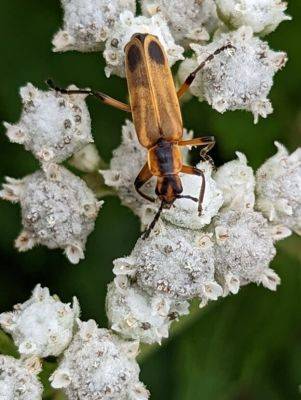Beetles were already pollinating the first flowers before bees evolved. Many of the flowers with an ancient lineage, including magnolia and spicebush, are beetle-pollinated, but so are many other flowers. Pawpaw, our largest native fruit, is beetle-pollinated. Beetle-pollinated flowers are often pale or dull in color, cup-shaped, and have a spicy or musky odor. Beetles are usually considered messy pollinators since they eat through flower parts as they pollinate. They are also regarded as inefficient pollinators. They feed on pollen, and as they feed, it sticks to their bodies, but since they are less hairy than other pollinators, the amount of pollen they move is less. However, astoundingly, beetles make up 40% of all known animals; by sheer numbers, they make up for this inefficiency.
Ambrosia Beetles
03.05.2024 - 14:13 / hgic.clemson.edu
Ambrosia beetles are common, tiny (only about 1/16” long), and can infest hundreds of different woody plant species. In South Carolina, these little beetles typically infest stressed trees, vines, or shrubs. Females will bore into stems and branches, creating a gallery. Beetles carry fungi on their bodies, and this fungus then grows inside the galleries, often appearing as white, gray, or black. The beetles feed on the fungus that grows inside the galleries.
Most ambrosia beetles are secondary pests, meaning they only attack and impact plants that are already stressed (e.g., from frost damage, flooding, drought, or poor planting). For this reason, proper tree and plant care is essential to prevent ambrosia beetle damage. When ambrosia beetles attack, they often leave characteristic spaghetti-like projections coming out of the host. These projections are called noodles, frass tubes, or toothpicks and are made mostly of sawdust, beetle frass (poop), and some fungal mycelium. These are sure signs of ambrosia beetle infestation. In South Carolina, the granulate ambrosia beetle is one of the most common species that attack woody plants on landscapes.
Some species of ambrosia beetles are primary pests, meaning they can and do attack healthy trees. The redbay ambrosia beetle attacks all species in the family Lauraceae, which includes redbay, swampbay, avocado, and many others. This beetle carries the disease laurel wilt, which is responsible for killing millions of trees across the Southeast. The black twig borer is common throughout the state but especially in the Lowcountry. This is one of the smallest ambrosia beetles and creates its galleries in small twigs. This damage causes branch flagging, which can reduce the aesthetics
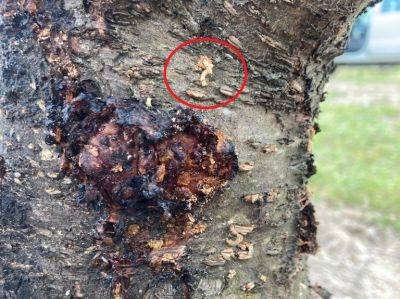
Question of the Week – Ambrosia Beetle
What caused this small, toothpick-like mass of sawdust to protrude from the trunk of this stressed peach tree?
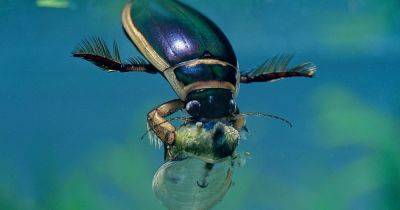
Wildlife watch: the great diving beetle
The great diving beetle is one of Britain’s largest beetles, with an olive-brown, oval body up to 3cm in length. It’s found in large ponds and other bodies of water, including swimming pools, and is easy to spot as it rises to the surface of the pond to replenish its air supply, which it stores beneath its wings.

Where Do Japanese Beetles Go at Night
Japanese beetles (Popillia japonica), those shiny pests that make unwelcome appearances in gardens and landscapes, can quickly become a gardener’s headache. As the sun sets, you may find yourself wondering: Where do Japanese Beetles go at Night?
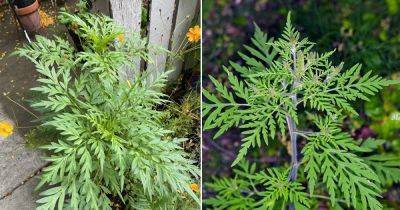
Ambrosia Artemisiifolia Plant Information | Annual Ragweed
Ambrosia artemisiifolia, or ragweed, is a plant species notorious for causing allergies. Despite this, the plant has been researched for its potential as a source of biofuels and natural chemicals, and it has a variety of traditional medicinal uses. If you are interested in growing the plant, it is important to follow proper guidelines.
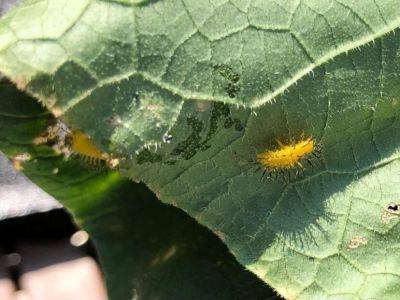
What Is It? Wednesday – Squash Beetles
What is this critter that was found? This spiky-looking thing on the underside of a cucumber leaf is a squash beetle larva. This is one of two species in the lady beetle family that feed on vegetable crops.
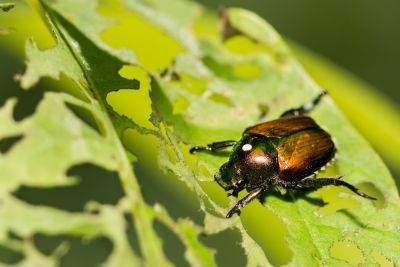
Swift Intervention By Western States Is Keeping a Devastating Beetle at Bay
With copper-colored wings and an emerald head, the Japanese beetle is pretty, but devastating.
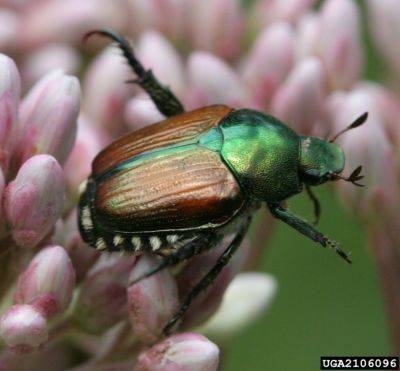
Japanese Beetles
A lot of attention recently has been on periodical cicadas, which are coming out of the ground after 17 years across parts of the Southeast and much of the Mid-Atlantic region. However, another insect is about to come out of the ground in South Carolina too, and this one is not just a novelty – it can completely defoliate many plants in your yard. That’s right, folks, it’s almost Japanese beetle season!

Stag Beetles
Few insects can grab your attention like a giant stag beetle. Stag beetles are in the insect family Lucanidae. Both females and males of many Lucanid species are impressively big, but the males, with their long mouthparts that look like antlers on a stag, are amazing and intimidating. While they are also called pinching bugs by some, they are quite harmless. The males have prominent mouthparts not to bite people but rather to impress females and to push, pull, and even throw rival stag beetles away from their future mate. Think of it as two bucks fighting over a doe in the forest.
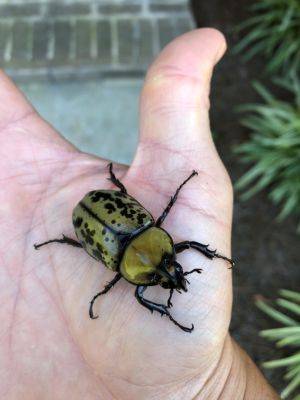
Eastern Hercules Beetles
The eastern Hercules beetle is one of the largest and heaviest insects in the U.S. In South Carolina, there is only one Hercules beetle species, Dynastes tityus. These insects are a type of beetle in the family Scarabaeidae – the same family as June beetles, Japanese beetles, and dung beetles.
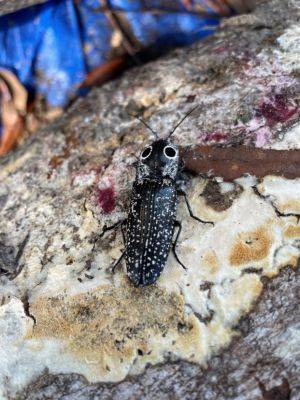
Eastern Eyed Click Beetle
The eastern eyed click beetle (Alaus oculatus) is found throughout South Carolina. Also known as the eyed elater, this is one of the larger click beetles in the region, with adults sometimes reaching almost 2” in length. They have two large black spots near their head that look like large eyes, which are thought to be for scaring away potential predators. Adults feed on nectar and are somewhat common around hardwood forest areas.

What Is It? Wednesday – Squash Beetle Trenching
The light-colored tissue we see here is the result of squash beetle behavior known as “trenching.” Trenching cuts off (at least temporarily) the translocation of cucurbitacin defense compounds to preserve the palatability and quality of the squash foliage feeding site. The beetles in this particular field were sprayed and killed after trenching this section of the leaf, so the yellow tissue remains and was not eaten. Similar behavior occurs with other insects, such as dogbane leaf beetles.
